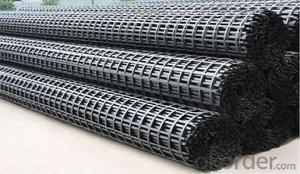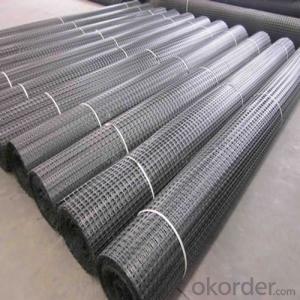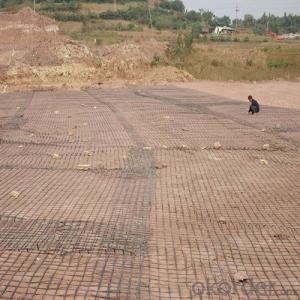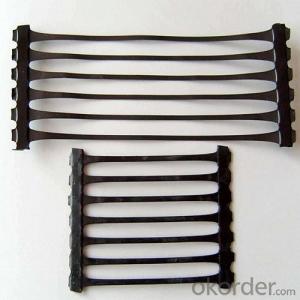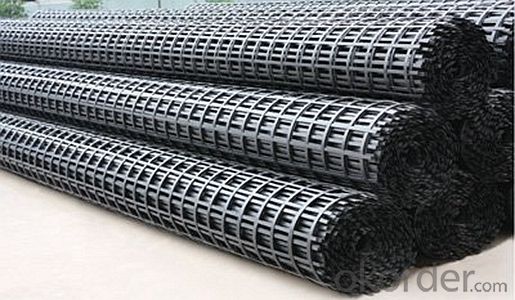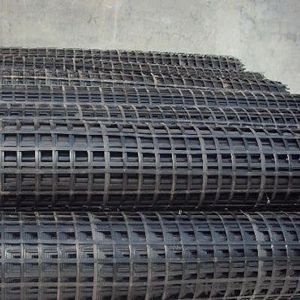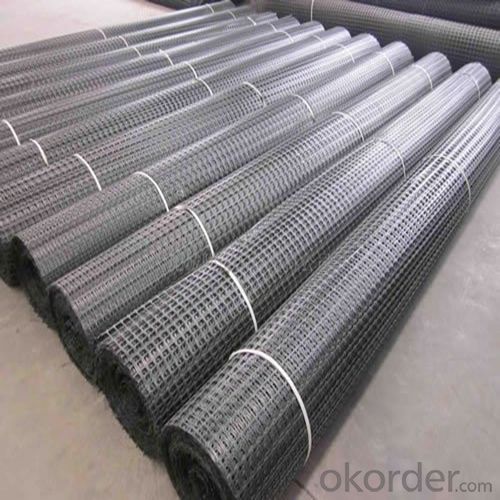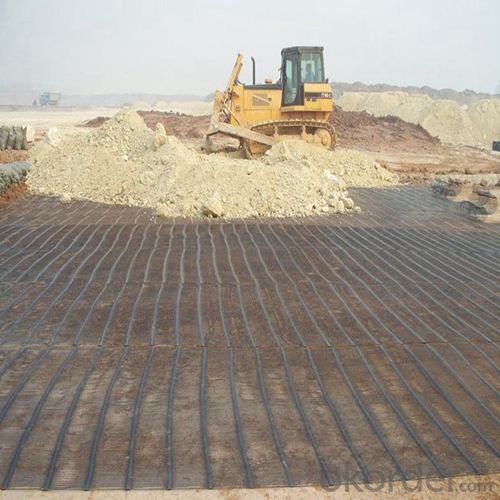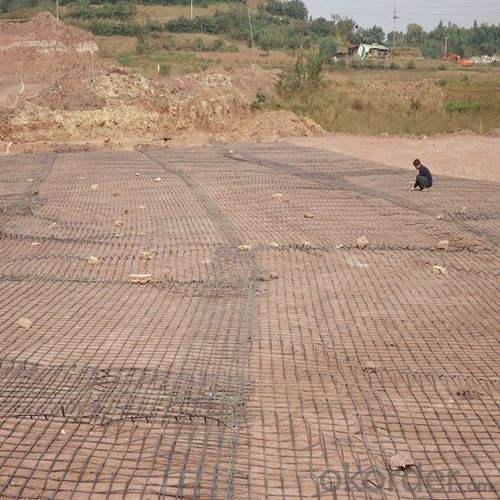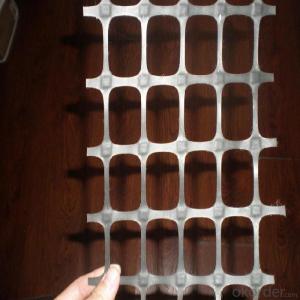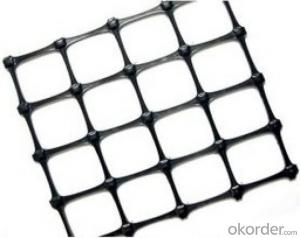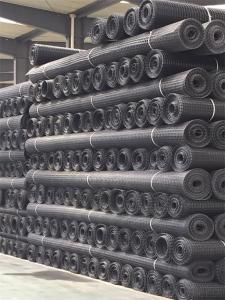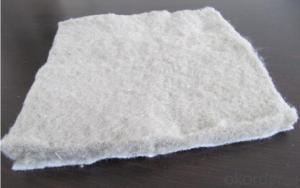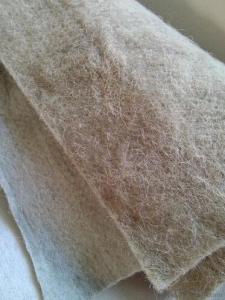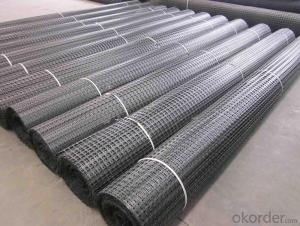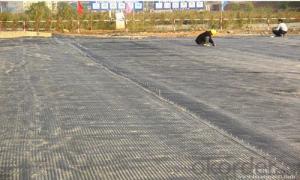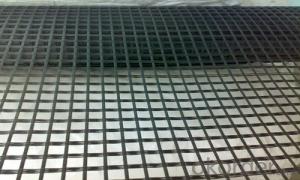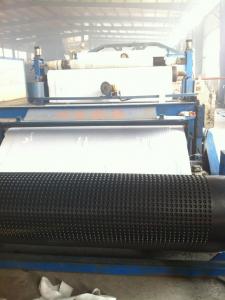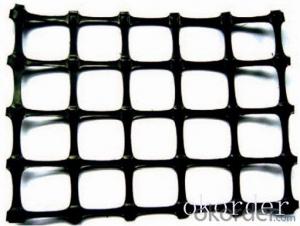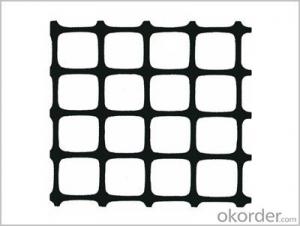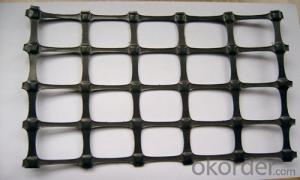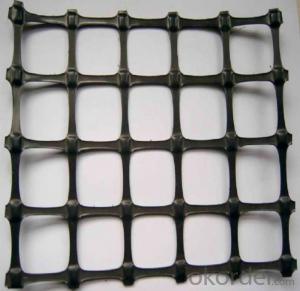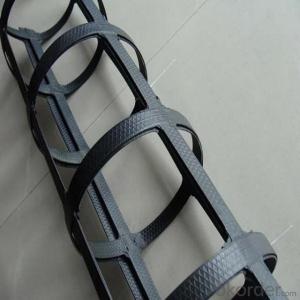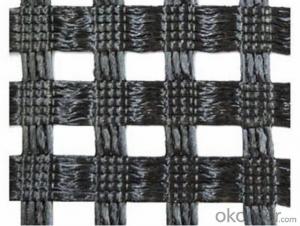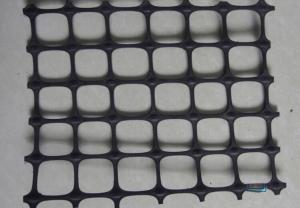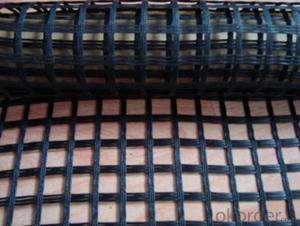Neoloy Geocells Polypropylene Geogrid for Civil Engineering Construction
- Loading Port:
- China main port
- Payment Terms:
- TT OR LC
- Min Order Qty:
- 1000 m²
- Supply Capability:
- 10000000 m²/month
OKorder Service Pledge
OKorder Financial Service
You Might Also Like
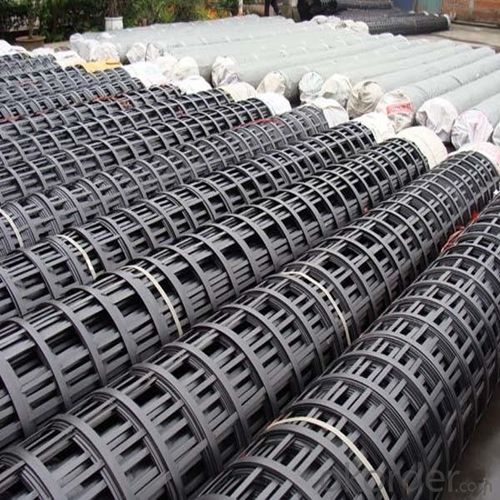
Introduction
Type:
Geogrids
Place of Origin:
Jiangsu, China (Mainland)
Brand Name:
Lonrace
Model Number:
geogrid
Material:
Polyester
Color:
White Black Gray Etc
feature:
Features:
1. High tensile strength in warp and across directions
2. Low Elongation
3. High flexibility
4. High and low temperature resistance
Slopes and subgrades with rails are a serious problem in railroad construction. Under high pressure the layers slide and deform consequently causing rail deformation, which requires closing railroad segments for a long time. Geogrid application allows carrying out comlex repair operations of the necessary road segment in shortest time (which is very essential in transportation)
Packaging & Shipping
Packing: PLASTIC FILM INSIDE, AND WOVEN BAG OUTSIDE
Shipping: About 15 days after receipt the deposit
geotextile fabric
permeability,filtration,easy for construction
ISO and CE certificate
Good quality and competitive price
Our Service
Quality assurance
1.On a regular basis or as per your request,we entrust national testing agencies to conduct quality inspections
2. Strictly in accordance with the ISO9001-2008 international quality system standard,we monitor and manage the whole process throughout production,quality testing,and measurement to ensure product quality
3. For quality-related construction delay or substandard construction(except for damage or losses due to customer’s responsibility or irresistible natural disasters),we have refunding,replacement,and repair services.We will respond to customers’ feedbacks on quality issues within 24 hours.
After-sales service
1.In order to provide customers with comprehensive technical support,we will provide technical and other related information upon request in a timely manner.
2.In required,we will appoint specialized technicians to the construction site to give technical trainings to construction people,and offer technical guidance throughout the whole construction process.
3.For damage due to shipment and delivery,after we receive the complaint,we will check the issure through provided pictures and videos.If our responsibility is confirmed,we wil offer free replacement.
4.When the construction is completed,as your request,our technical staff may participate in the final acceptance.
FAQ:
Q: What kind of payments does jenor support?
A: T/T, L/C, Cash are accepted.
Q: Do you charge for the samples?
A: Accordeing to our company policy, the samples are free, we only charge the freight fee. And we will return the freight fee during the next order.
Q: Can you produce according to customers' design?
A: Sure, we are professional manufacturer, OEM and ODM are both welcome.
Q: Do you have other products?
A: Yes, please check the pictures:
- Q: What are the advantages of using geogrids in mechanically stabilized aggregate bases?
- Geogrids offer several advantages in mechanically stabilized aggregate bases. Firstly, they enhance the load-bearing capacity of the base by providing reinforcement, allowing for the construction of thinner and more cost-effective pavement structures. Secondly, geogrids improve the overall stability and durability of the base by preventing lateral spreading and reducing rutting and deformation. Additionally, they help distribute applied loads more evenly, reducing localized stress and increasing the lifespan of the pavement. Overall, geogrids significantly enhance the performance and longevity of mechanically stabilized aggregate bases.
- Q: How do geogrids help in reducing the risk of settlement of structures?
- Geogrids help in reducing the risk of settlement of structures by providing reinforcement to the soil or fill material beneath the structure. They create a stronger and more stable base, distributing the load evenly and preventing excessive settlement. This helps to maintain the integrity of the structure and reduce the potential for damage or failure due to settlement.
- Q: Are geogrids suitable for use in permafrost conditions?
- Yes, geogrids are suitable for use in permafrost conditions. Geogrids are made from materials that can withstand extremely cold temperatures and have been designed to provide stability, reinforcement, and prevent soil erosion. They can be an effective solution for reinforcing soils in permafrost areas, helping to mitigate the effects of thawing and preventing ground movement.
- Q: Can geogrids be used in stabilization of mine tailings ponds?
- Yes, geogrids can be used in the stabilization of mine tailings ponds. Geogrids are commonly used in civil engineering for soil stabilization and reinforcement. They can provide strength and stability to the soil, preventing erosion and minimizing the risk of slope failure. In the context of mine tailings ponds, where the soil is often unstable and prone to erosion, geogrids can be an effective solution for stabilizing the area and preventing environmental hazards.
- Q: What are the installation methods for geogrids?
- There are several installation methods for geogrids, including direct placement, mechanical connection, and soil confinement. Direct placement involves laying the geogrid directly on the ground and securing it with stakes or pins. Mechanical connection involves connecting the geogrid to other materials, such as retaining walls or slopes, using connectors or anchor systems. Soil confinement involves placing the geogrid within a layer of soil to improve its stability and strength. The specific installation method used depends on the specific project requirements and conditions.
- Q: Geosynthetic materials for flood control materials
- The aging rate of geotextile exposed to sunlight is very fast, which can only be used for 1 years at most. However, the aging speed will be much slower when buried in soil or under water. At present, the aging speed of polypropylene fabric is very fast, the aging rate of polyester and polyethylene fabric is slow, and the difference is nearly L times. For the same kind of geosynthetics, light aging fast, slow aging aging dark, flat, thin, round wire, thick slow aging. Geomembrane is generally divided into two categories of asphalt and polymer. Each of the two classes has no reinforcement and reinforcement. The most commonly used polymer geomembrane is PVC, CPE, CB, HDPE, CSPE, etc..
- Q: What are the factors that affect the design of geogrid-reinforced structures?
- The factors that affect the design of geogrid-reinforced structures include the type and strength of geogrid material, soil properties (such as strength and settlement characteristics), loading conditions, design life requirements, construction techniques, and potential environmental factors (such as temperature variations and chemical exposure). Additionally, factors such as site-specific conditions, project constraints, and regulatory requirements may also influence the design of geogrid-reinforced structures. Overall, a comprehensive understanding of these factors is crucial to ensure the optimal design and performance of geogrid-reinforced structures.
- Q: Can geogrids be used in mining tailings management applications?
- Yes, geogrids can be used in mining tailings management applications. Geogrids are commonly employed to reinforce and stabilize soil structures, including mining tailings. They can help in preventing soil erosion, providing stability to the tailings dam, and improving overall tailings management.
- Q: Can geogrids be used in erosion control on riverbanks?
- Yes, geogrids can be used in erosion control on riverbanks. Geogrids are commonly used in such applications to stabilize the soil and prevent erosion by reinforcing the bank's structure and retaining the soil in place.
- Q: How do geogrids improve the performance of geosynthetic encased columns?
- Geogrids improve the performance of geosynthetic encased columns by providing additional reinforcement and stability to the column structure. They help distribute the load more evenly, enhance bearing capacity, and prevent excessive settlement or lateral movement. Geogrids also enhance the confinement of the column, reducing the potential for soil erosion and improving the overall durability and longevity of the structure.
Send your message to us
Neoloy Geocells Polypropylene Geogrid for Civil Engineering Construction
- Loading Port:
- China main port
- Payment Terms:
- TT OR LC
- Min Order Qty:
- 1000 m²
- Supply Capability:
- 10000000 m²/month
OKorder Service Pledge
OKorder Financial Service
Similar products
Hot products
Hot Searches
Related keywords
